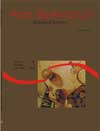<strong>Origins of sample mistakes in the measure of the length and weight of fish larvae</strong> - DOI: 10.4025/actascibiolsci.v30i3.393
Keywords:
sampling, accuracy, fish larvae, measurements, precision
Abstract
Experiments in the cultivation or ecological with fish larvae, invariably use the length and weight with parameters. Therefore, this experiment was accomplished with larvae of Lophiosilurus alexandri pacamã aiming at to determine some sources of mistakes sampling in the measurement of the size and of the weight of fish larvae. It was evaluated five possible sources of mistakes then. The first was the mistake in the measure of the lengths total and standard, due sharpness of two observers' measurement. The second the mistake in the measure of the lengths total and standard, due to the proportionate shrink for the fixative formomalin to 10%. The third party was the mistake due two forms of drying of the larvae in the obtaining of the biomass. The fourth experiment was on the influence of the size and of the grouping of the larvas in the obtaining of weights. Finally the last tested the alteration of the biomass due to the time of permanence of the larvae in the balance. The importance can be verified of to determine and to accomplish an sampling protocol for measurements of fish larvae. For they present size and weight reduced, a small variation in the condition of the mensure, it can alter the result significantly, because significant alterations were verified above for the tests referred.Downloads
Download data is not yet available.
Published
2008-09-12
How to Cite
Pedreira, M. M., Santos, J. C. E. dos, Sampaio, E. V., Silva, J. de L., & Ferreira, F. N. (2008). <strong>Origins of sample mistakes in the measure of the length and weight of fish larvae</strong> - DOI: 10.4025/actascibiolsci.v30i3.393. Acta Scientiarum. Biological Sciences, 30(3), 245-251. https://doi.org/10.4025/actascibiolsci.v30i3.393
Issue
Section
Aquiculture and Fisheries Resources
DECLARATION OF ORIGINALITY AND COPYRIGHTS
I Declare that current article is original and has not been submitted for publication, in part or in whole, to any other national or international journal.
The copyrights belong exclusively to the authors. Published content is licensed under Creative Commons Attribution 4.0 (CC BY 4.0) guidelines, which allows sharing (copy and distribution of the material in any medium or format) and adaptation (remix, transform, and build upon the material) for any purpose, even commercially, under the terms of attribution.
Read this link for further information on how to use CC BY 4.0 properly.
0.6
2019CiteScore
31st percentile
Powered by 

0.6
2019CiteScore
31st percentile
Powered by 











1.png)




3.png)













